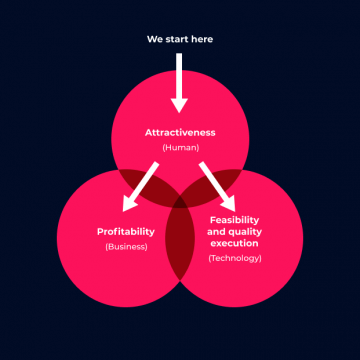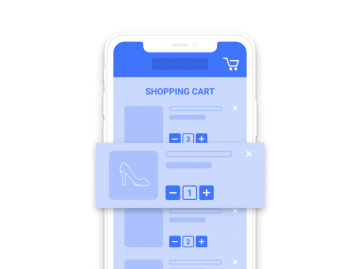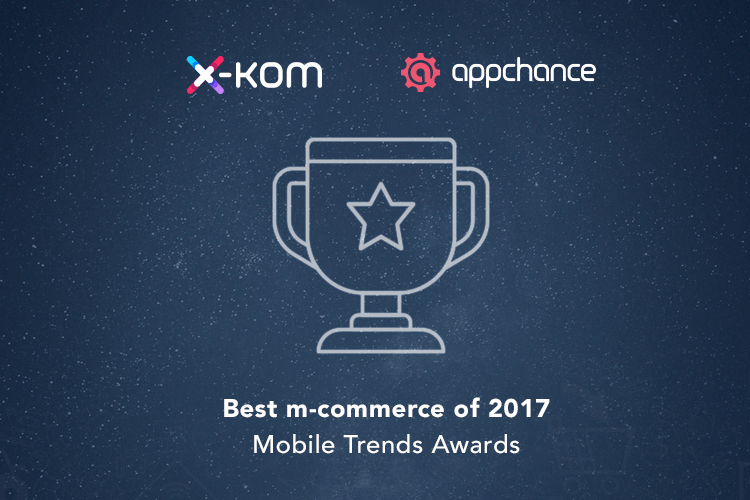Two important aspects of creating an m-commerce app
Everybody who has decided to implement mobile solutions in their business knows how hard it is to create an app that users will enjoy using and coming back to. There are two crucial aspects which influence the app’s popularity
- The app’s UX/UI design – for the app to be successful, it must be adequately designed – it should be intuitive, quick and useful to the recipient. For the most part, however, it should bring the user a number of benefits that will motivate them to use it.
- An equally important element is the right promotion of the app. Building it alone won’t guarantee market success. The key is to design a well-thought out and suitable promotion strategy which will let you reach the intended target group.
The answer to the question: “how to do it” is not one of the simplest ones due to its complexity (on many levels, the concept, implementation, as well as promotion). That’s why today we’d like to focus on the implementation and describe selected good practices which were applied in the x-kom app to maximize the potential of mobile in business development.
An example of a well-designed shop application
X-kom is an app of one of the 4 biggest suppliers of computer equipment in Poland, who used to base their distribution on online sales on desktop and stationary sales in 26 stores throughout Poland. Great possibilities to reach consumers connected with the growth of mobile market, specifically, the way and frequency people started using their smartphones, turned out to be a wonderful chance to grow the business with a new distribution channel. x-kom decided to enable the option to buy their products with a smartphone and this concept hit the bull’s-eye. X-kom and Appchance got the first award in the m-commerce on Mobile Trends Conference 2018, but the app’s real first success are the numbers about user activity and retention.
X-kom and Appchance got the first award in the m-commerce on Mobile Trends Conference 2018, but the app’s real first success are the numbers about user activity and retention.
The app has 115 000 downloads on Android and 30 000 downloads on iOS, getting over 60 000 new active users each month (result from 01.2017 to 02.2018). The big interest in the app and a high retention rate are the effect of planned activities and implemented mechanisms. Let’s think about which elements have made the x-kom app be so popular.
First of all, great usefulness for the users. Clients can shop conveniently wherever they are – the app lets them check out newest offers at any place and time. The character of smartphone consumption as a medium itself (which accompanies us almost all the time) becomes a good chance to build a communication continuum brand – user. Thanks to it, strengthening loyalty to the brand is possible.
Additionally, adequate designing of the app functions lets you use mobile-specific options. Let’s get to the gist.
Main benefits for the user
The most important element building loyalty to the app is offering a tangible benefit to the user.
Push notifications with an attractive offer
The most important element building loyalty to the app is offering tangible benefits to the user. In the case of x-kom, it’s using push notifications to inform them about the most important changes. The flagship example of a high-value notification is the so called “Hot Shot”. A Hot Shot is a preferential price offer for a given product limited by the number and time (available for 12 hours since publishing). The users get a notification on their phone about it and can react quickly until the deal is over.
Delivering the right information to the user on the right time is a big advantage over a desktop shop. Push notifications concern a range of changes, e.g. new deals, new hot shot products, changes in favorited products or the delivery status (and the users decide themselves which information they want to receive in the notification management section).
The information is not the only advantage. For app users, there are a bunch of dedicated offers which are not available on other distribution channels, so it’s another motivating factor to use the app.
Navigation adjusted to mobile devices
Going further with the subject of usefulness, you should mention the project of the shop’s architecture on mobile. The obstacle to overcome here was reshaping a desktop shop’s architecture to mobile.

On the first screen, we can see the 3 most popular categories, and the 4th, which is a gateway to others. After choosing “All categories”, the user can get to know the list of the main categories which get more specifics with further levels. So, if the user doesn’t necessarily know the name of the product or doesn’t have the favorite brand – they can verify products by categories. Moreover, the user has 2 options here – they can type in the name of the product in the browser or scan the barcode of a given product with their camera. This second option is very useful because of the popular shopping pattern ROPO (research offline, purchase online). Here, x-kom also meets the user’s expectations – the customer can search for the product in a stationary store and check its price on x-kom online via scanning the barcode.
Using features typical of mobile devices
The ease of using is also connected with using the natural language for mobile – the swipe gestures. The commands are made by tapping and swiping, which makes it even faster to go through the shop. Swiping from the list of specific products to the right you can add a product to a comparison mechanism or watching list (more on that in a moment). Swiping your finger left, you can immediately add the product to the cart, beginning the transaction. Here, there are no additional drop-down lists or buttons, making it all clearer.
 .
. 
The following and comparison feature
The ‘add to followed’ function lets you save a product in a special tab and watch its changes in price or availability. The ‘compare’ feature lets you specify given parameters of the product (from a given category) in a table, highlighting the differences. It all makes enables the user to check which units and modules are better in each product.
Personalization of content inside the app
The next element that boosts user experience is remembering them and their preferences. What does that mean? It means remembering all transaction, payment, delivery address data and the option to use auto-fill for all next transactions. The data are saved cross-platform, so actions on a desktop are stored and used in the application and the other way around. Switching between devices, the user doesn’t lose any information.
Functionality as a result of user behavior analysis
The number of the above-mentioned improvements are only a part of the implementations that took place last year and which contributed to x-kom and Appchance getting the first place on Mobile Trends Conference 2018 in the m-commerce category.
The app was designed so that the customer could easily find relevant information and the experience with the app was the best. The user must know how to navigate through the shop and quickly find the functions they need. Intuitiveness, convenience and user experience are not cliches here, but a range of implementations based on the analysis of user behavior.
Check out more on a dedicated landing page with a business case.
X-kom doesn’t only watches the behavior of its users and checks what needs to be improved, but also actively asks about preferred functions and listens to its users (which influence then implementations in subsequent updates). Thanks to that, they are eager to use the app and share their experiences with others.
So, how to make an app for an Internet shop?
Each functionality in the app should be created after answering the question: why and what for. Each one should be backed with shopping habits and behaviors of the user. If you design based on the data – there’s a big chance the app will be structured in a way that it will attract customers and thus benefit your business.
You have an online shop and don’t have a mobile version yet? Contact us.
You might also like

Increasing mobile app retention focuses on the users returning…

Most marketing and e-commerce experts agree that m-commerce applications…

The number of people shopping through mobile devices is…

There has been much talk of e-commerce in recent…

App Store Optimization, or ASO, entails the process of…




One thought on “How x-kom got the first place at the MTA in m-commerce category.”